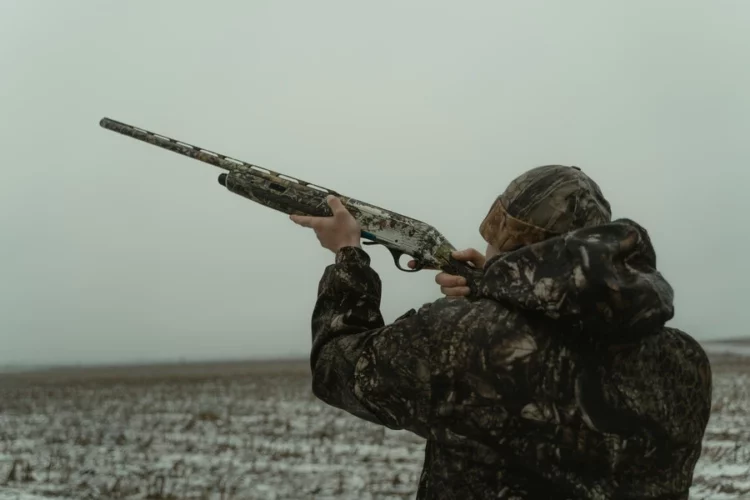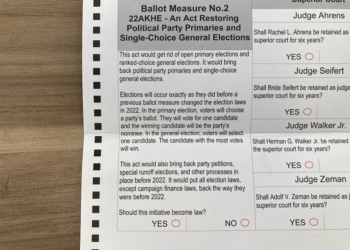Whether feet deep in the snow or maneuvering over rocks and bushes, your camo can make all the difference in a split-second decision. Animals that do not expect you to show up in their biome will likely glance unknowingly past you. This will allow you to be more successful tracking, hunting, or even photogrpahing wild animals.
When considering the climate, the lighting, and the price, certain camouflages have both strong suits and flaws. Hunting prey in the desert requires different colors and textures than turkey bow hunting camouflage and vice versa.
Here is our list of the five best ways to tell which camo pattern is best for you and why.
What Biome And Terrain Are You Hunting In?
The color palette of your hunting gear can fool an animal if it blends in with the surrounding environment palette. Rocks, branches, and dirt create a green-beige mix that certain camos, like natural gear, mimic considerably well.
Plenty of items are available to help hunters blend into the forests and mountains of North America. They also warp the depth perception of the perceiver. Some include:
- Nomad Harvester NXT Jacket, Mossy Oak Droptine – These jackets are windproof and feature hand warmers. It has a mossy oak droptine camo that overlaps the warmer colors of the branches and leaves.
- Huntworth Fairbanks Heavy Weight Tarnen Waterproof Sherpa-lined Jacket – This item delivers extra warmth for the later months. The jacket is 100% water-proof and has two stash pockets near the top of the chest to warm your hands.
Meanwhile, tundras and taigas will require shades of white that blend in with the lighting of the snowbanks. Multicam is very efficient in the desert. Hunters consider Cabela’s MT050 Whitetail Extreme GORE-TEX Parka useful in colder weather.
Appliances such as CamoDust can mask the human scent. You should also get camos for your weapons to keep animals from pointing them out. Learn more about hunting weapons and how they work.
What Are You Hunting?
Tracking and hunting certain animals means going to where they live. They are used to seeing specific colors and patterns on a daily basis, so your camo should match that. Depending on the environment, you might need thicker, shorter, thinner, or lighter gear to help you maneuver.
Some animals can not detect specific camouflages as well as others. One of the most impressive camouflages that exist is Xtra Green. This camo is beyond efficient. Deer have virtually no way of knowing you are in their presence.
There are a variety of camos that work well on turkey hunts. Realtree and Sitka products are particularly effective. Any Mossy Oak item is also great for hunting turkeys. Get headwear that does not negatively affect your peripheral vision.
Hunting larger animals means being able to hide your outline. The best camos employ something called disruptive coloration. This phenomenon is when an object breaks up its outline by eating different colors of the backdrop into itself.
How Stealthy Do You Need To Be?
The trick to a good camo is whether it can trick your ability to measure distance and depth. The shades and lines on the camo should fool you into thinking they are resting against the natural backdrop of your surroundings.
Some of the more efficient camos are KUIU products. They are top of the line, and you can not go wrong with them. The KUIU Axis Hybrid Gear Set works amazingly with the color sets of wet forests and rocks, which gives hunters plenty of cover.
For additional stealth, get clothing made from soft, silent material. Certain camos are better for moving around silently to zero in closer to your target. You can even get a mask or hood that camouflages your face if you feel the need, though most hunts do not require it.
Items like the SITKA Gear Ultra-Quiet Fleece Hunting Jacket allow hunters excellent agility. This jacket mimics the snowflakes and branches, and animals will not suspect you are watching in the distance.
What Time Are You Hunting?
The perfect camo will depend on the time of day you are hunting. Sometimes you end up staying longer out than you expected. Realtree AP Camo is a neutral camo that works well at any time of day. It has light and dark shadings to blend you in whenever you go out.
During the autumn, your camo should have blends of warmer colors. This blend will help you hide against the backdrop of the orange leaves and changing colors of the trees. Certain digital camos are also available for different times of the year.
There are even night camos available for hunting in the desert. You might think it is meaningless to wear camouflage at night, but animals can be fooled by certain color shadings, especially when you are moving slowly. Desert Night Camo is a military camo very useful for this.
How Much Is Your Budget?
The more efficient camos are going to be more expensive. Expensive camos can range from two to six hundred dollars an item. Coats are generally more costly.
Some of the more high-end items include Forloh and certain things from Cabella’s. These items will have impressive results on a hunting trip but will have less remarkable effects on your finances.
Fortunately, not every situation calls for high-end brands. Hunters can track down most small animals with basic camo patterns like a green t-shirt with khaki pants and boots. Mix and match basic tans and warm colors for a cheap alternative to store-bought camo patterns.
In addition to considering the price of your camo, consider the cost of any other equipment you will need to bring. If you are traveling long distances, you might need a bicycle for transport, which can take away from your camouflage budget. Here is how to choose the right mountain bike.
Wrap-Up
Your camo should be completely customizable. There are so many different camos to choose from. Your understanding of your environment is the ultimate way to find out which camo pattern is best for you.







